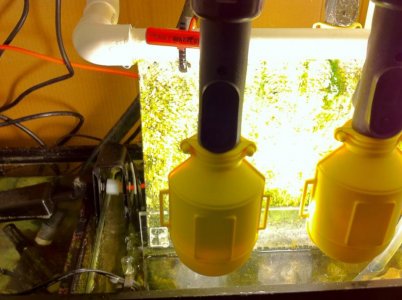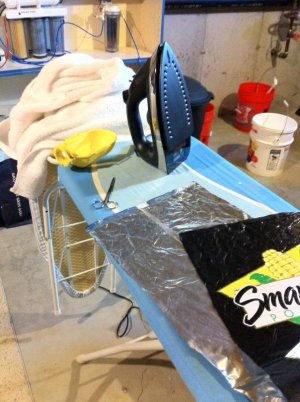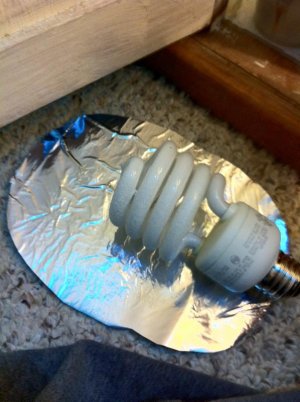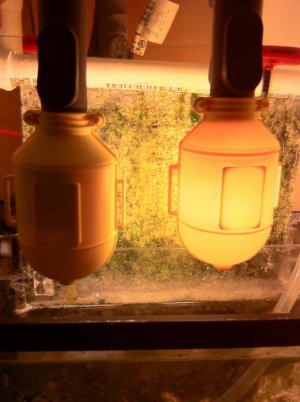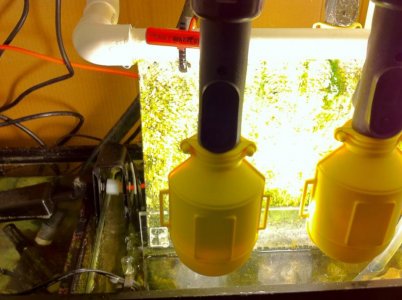I run no cooling fans, but neither do most fixtures with remote ballasts. Most 2-lamp fixtures do not run fans either, so I'm not so concerned. Could you post a link to the chart you talk about though? I would be interested to see what you're talking about.
Here ya go. It would be interesting to see at what temp your rig operates.
http://www.lrc.rpi.edu/programs/nlpip/lightingAnswers/lat5/pc10.asp
There's plenty of room for convective cooling of the lamps. As for the heating, with 78 degree water on the other side of the acrylic, whatever temperature increase occurs is wicked away very quickly. So "cooked" is not really accurate, because heat is not the problem. Also, algae doesn't really bleach out due to too much light, it just stops growing after a few hours (photoinhibition). If you look back at some of my posts, you will see that flow rate effects the color of the algae grown. The uneven flow I have in general (because of crosscuts/notches) causes strong green growth in higher flow areas, and lower flow areas are lighter green to yellow.
"Also, algae doesn't really bleach out due to too much light, it just stops growing after a few hours (photoinhibition)."
Which returns me to the bald spots from a too close CFL. If not from too much light, isn't heat all that's left? Do they produce anything besides light and heat?
In my system, I have a drain on each end, so as the algae grows out from the screen and traps the water, it builds up a parabolic shaped water level. I use a slip-to-threaded female/female connector inside the corners, which stick up about 1.5" inside the box (the intent being to create a water trough at the bottom of the screen to reduce bubbles). The top 1" of the flooded area formed by the 3D algae receives good water flow, but then it forms a blockade of sorts that causes relatively stagnant water below that area. Once the growth completely fills the bottom area (below the 'minimum' water line created by the connectors), that water is essentially stagnant, and there isn't much water flow between that stagnant line and the parabolic curve 'trap'. This condition only occurs for a few days, toward the end of the week, but it is enough to choke off much of the algae in that area. I believe this is also due to the fact that the interior width of the screen box is 1.75", and this is probably about as small as anyone has made it. That's less than 1" of space on each side of the screen to the enclosure.
There has been much discussion here and elsewhere about running a fully flooded ATS. At this point, I would not recommend it, and would reserve such a design for experimental purposes only. Personally, my next iteration of design will probably prevent the box from being flooded and restrict 3D growth, at least to the point of blocking lower layers from laminar flow.
. . . . .




